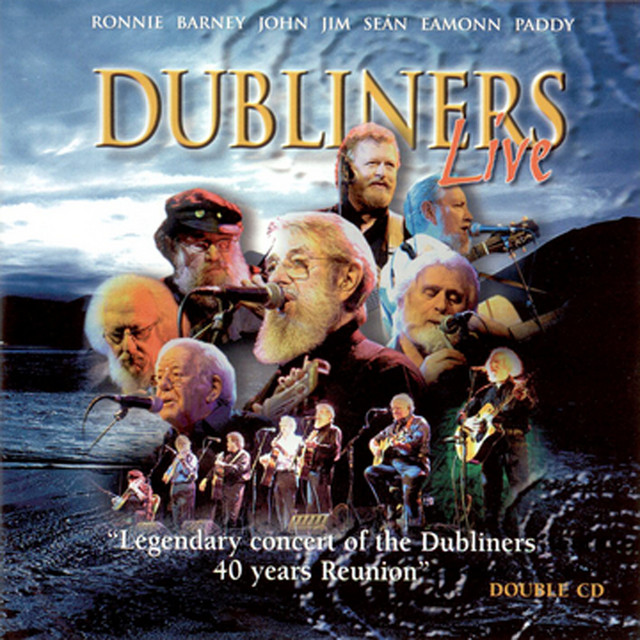

“The Fields of Athenry” stands as a poignant testament to Ireland’s history, capturing the nation’s enduring spirit through its evocative lyrics and melody.
Composed in 1979 by Dublin-born songwriter Pete St. John, the song narrates the harrowing tale of a man named Michael, imprisoned for stealing food to sustain his starving family during the Great Irish Famine.
Set against the backdrop of Athenry, a small town in County Galway, the ballad delves deep into themes of love, loss, and resilience.
Origins and Historical Context
While many perceive “The Fields of Athenry” as a traditional folk song passed down through generations, it is, in fact, a relatively recent composition. Pete St. John penned the song after being inspired by accounts of the Great Famine (1845-1850), a period marked by mass starvation, disease, and emigration in Ireland. The narrative centers on Michael, who is caught stealing “Trevelyan’s corn”—a reference to Sir Charles Edward Trevelyan, a British civil servant whose policies exacerbated the famine’s devastation. As punishment, Michael is sentenced to transportation to Australia, a fate that tore countless families apart during that era. The song poignantly captures the sorrow of separation and the enduring hope for a better future.
Cultural Impact and Popularity
Since its release, “The Fields of Athenry” has transcended its origins to become an unofficial anthem for Ireland. Its widespread appeal is evident in various arenas:
-
Music Charts: The song has been covered by numerous artists. Notably, Paddy Reilly’s 1983 rendition remained in the Irish charts for an impressive 72 weeks, solidifying its place in Irish music history.
-
Sports Arenas: The melody resonates powerfully in stadiums, with fans of Irish sports teams, particularly rugby and football, adopting it as a rallying cry. Its emotive chorus fosters a sense of unity and national pride among supporters.
-
Global Recognition: The song’s reach extends beyond Ireland. International artists and audiences have embraced its universal themes of struggle and hope, leading to numerous covers and performances worldwide.
Addressing Common Questions
Is “The Fields of Athenry” an IRA song?
No, “The Fields of Athenry” is not an IRA song. It was written by Pete St. John in 1979 and reflects on the hardships faced during the Great Irish Famine of the 19th century. While it has been sung in various contexts, including political ones, its origins are rooted in a historical narrative rather than any association with the IRA.
Is “The Fields of Athenry” a funeral song?
While “The Fields of Athenry” is not specifically a funeral song, its melancholic melody and themes of loss and longing have led to its inclusion in memorial services and funerals, especially within Irish communities. Its emotional depth resonates with those mourning the loss of loved ones.
What is the most popular version of “The Fields of Athenry”?
Paddy Reilly’s 1983 rendition is widely regarded as the most popular version. This recording achieved significant commercial success, remaining on the Irish charts for 72 consecutive weeks.
Why is “The Fields of Athenry” banned?
There is no widespread ban on “The Fields of Athenry.” However, its adoption by various groups, including sports fans and political organizations, has occasionally sparked controversy. In certain contexts, especially where the song has been associated with political sentiments, there have been discussions or misunderstandings about its appropriateness. For instance, a London newspaper once faced backlash for labeling the song as a “rebel song,” highlighting the sensitivities surrounding its interpretation.
Why do Irish fans sing “The Fields of Athenry” lyrics?
Irish fans sing “The Fields of Athenry” to express unity, national pride, and resilience. The song’s themes resonate deeply with the Irish experience, and its chorus provides a unifying chant that brings fans together, especially during sporting events.
Do Celtic fans support the IRA?
While some supporters of Glasgow Celtic Football Club have historically expressed political sentiments, it’s inaccurate and unfair to generalize the entire fan base as supporting the IRA. The club has a diverse following with a wide range of views, and many fans focus solely on the sport.
Is “The Fields of Athenry” Catholic or Protestant?
“The Fields of Athenry” is a secular song and does not pertain to any religious denomination. Its narrative centers on historical events affecting all Irish people, regardless of religious affiliation.
What does the song “Grace” mean?
“Grace” is another poignant Irish ballad that tells the story of Grace Gifford and Joseph Plunkett. Plunkett was one of the leaders of the 1916 Easter Rising, and the couple married in Kilmainham Gaol just hours before his execution. The song reflects themes of love, sacrifice, and the personal costs of political struggle.
For a deeper understanding of “The Fields of Athenry” and its significance, you might find this video insightful:





